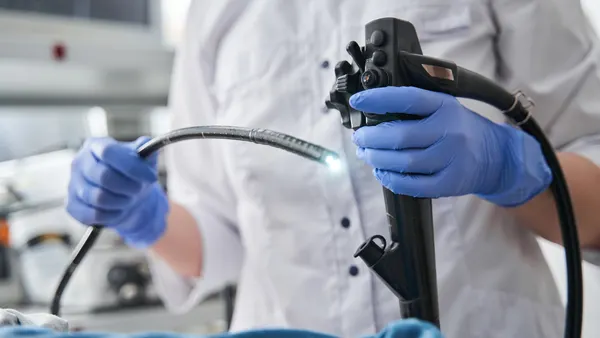Dive Brief:
-
FDA finalized recommendations Tuesday about how vitro diagnostics manufacturers can apply for Clinical Laboratory Improvement Amendment or CLIA waivers. Tests deemed simple with a low risk of error can get a waiver from the rules.
-
One of the two documents that FDA issued has undergone significant changes since a draft version was shared for consultation late in 2018. FDA added new sections on failure alerts, labeling, and safeguards, doubling the length of the text in the process.
- FDA made the changes despite receiving broadly positive feedback on the draft, which trade group AdvaMedDx said “set forth clear, understandable policy for innovators.”
Dive Insight:
The two sets of recommendations cover applications from IVD manufacturers for CLIA waivers and for dual 510(k) and CLIA waivers. FDA created the documents to help companies free themselves from CLIA requirements and more efficiently generate the data needed to get tests to market. The first drafts of the texts received some pushback from industry, leading FDA to revise them and start a second consultation.
FDA received positive feedback on the second set of draft recommendations. AdvaMedDx raised “a few suggestions for clarifying certain aspects of the guidance” on CLIA waivers but was broadly supportive, going as far as to applaud FDA for issuing “guidance to support clear, consistent policy to ensure timely access to diagnostic tests at the point of care.” Abbott also submitted positive feedback.
FDA went on to augment the CLIA waiver recommendations, while leaving the guidance on dual 510(k) filings largely unchanged. The revisions to the CLIA waiver document are mostly new additions to the guidance, rather than changes to the existing text.
The agency added sections that describe the components of a CLIA waiver application, outline how to show a test is “simple,” discuss failure alerts and fail-safe mechanisms, and provide an overview of labeling and safeguards for waived tests.
In the new section on failure alerts and fail-safe mechanisms, FDA describes how IVD manufacturers can adopt and test features designed to mitigate the risk of an erroneous result. For example, a test could lock a user out if they tried to use it in inappropriate conditions.
FDA is advising companies to take a two-tiered approach to show measures are in place to ensure risk of an erroneous result is insignificant. The first step is to identify all potential sources of error. With that done, FDA wants IVD manufacturers to identify measures to control the sources of error and validate them under conditions that “stress the device.”
The changes to the recommendations for dual 510(k) and CLIA waiver applications are smaller. FDA made a small change to its list of general study design considerations, removing details of how to run comparison studies and adding the recommendation that “testing should be integrated into the daily workflow of the site where the operators are often multitasking.” FDA also tweaked its position on reproducibility studies, calling for sponsors to run the trials at a minimum of three sites.












